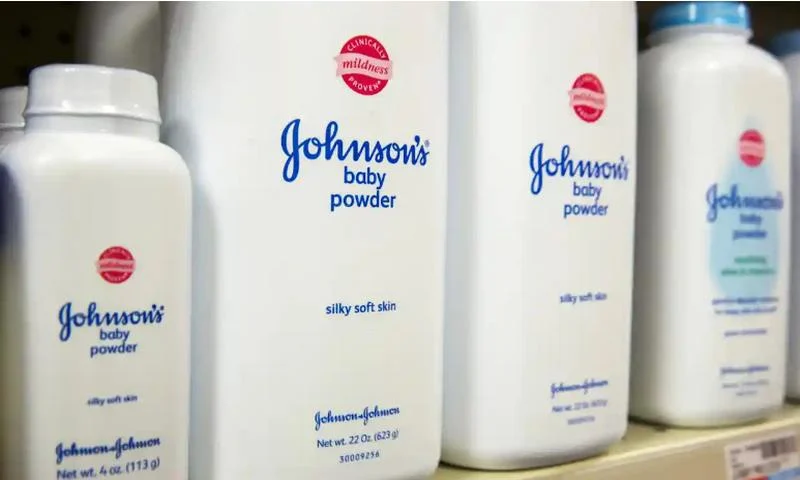
Like most personal care products, baby powder can expire or lose its effectiveness over time, even though it may not have a strict expiration date printed on
the packaging. The shelf life largely depends on the ingredients, storage conditions, and whether the product has been opened.
Does Baby Powder Expire contains talc or cornstarch as its main ingredient, it doesn’t spoil easily since these are dry substances. However, over time, the product may absorb moisture from the air, leading to clumping, changes in texture,
or reduced performance. Additionally, if the powder includes additives like fragrances or essential oils, these can degrade, causing a stale smell or altered effectiveness.
To determine if your baby powder is still safe to use:
Check for changes: Look for lumps, discoloration, or an unusual odor.
Inspect the packaging: Some manufacturers include a “best by” or “use by” date, which is a good guideline.
Consider hygiene: If the powder has been stored in a humid or unsanitary environment, it’s best to discard it.
Proper storage can prolong the shelf life of baby powder. When in doubt, replacing the product is a safer choice, especially when it’s intended for sensitive skin like a baby’s.
What Is Baby Powder?
Baby powder is a fine, powdered substance designed to absorb moisture, reduce friction, and help keep skin dry and comfortable.
It’s commonly used for babies to prevent diaper rash and irritation, but it’s also used by adults for similar purposes, such as reducing chafing or keeping skin fresh. Visit out blog post
Key Ingredients in Baby Powder:
Talc: Traditionally, talc was the main ingredient in baby powder due to its excellent moisture-absorbing properties and silky texture. However, concerns about the potential health risks of talc have led many brands to shift away from it.
Cornstarch: A natural, plant-based alternative to talc, cornstarch is widely used in modern baby powders. It’s safe, highly absorbent, and gentle on the skin.
Additives: Some baby powders include soothing ingredients like aloe vera, calendula, or mild fragrances for added comfort and freshness.
Common Uses of Baby Powder:
For babies: Applied during diaper changes to help keep the skin dry and prevent rashes or irritation.
For adults: Used to reduce sweat and friction, particularly in areas prone to chafing, such as thighs or underarms.
In beauty routines: Sometimes used as a dry shampoo or to set makeup.
Safety Note:
While baby powder has been a staple in skincare for decades, it’s important to choose a product that’s safe and free of harmful chemicals,
especially when used on sensitive skin. Cornstarch-based powders are now considered a safer choice for both babies and adults.
Does Cornstarch Baby Powder Expire?
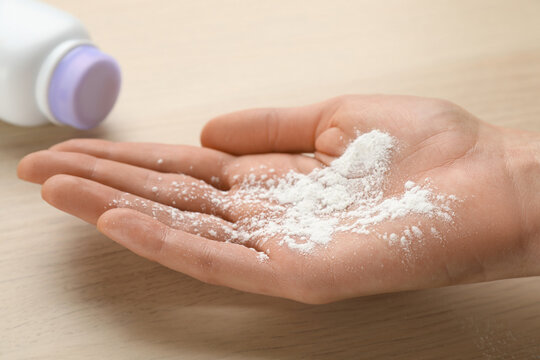
Cornstarch baby powder, while not having a specific expiration date, can lose its effectiveness and quality over time.
Unlike food products, baby powder doesn’t go bad in the traditional sense, but several factors can affect its usability, especially after extended periods.
Factors Affecting Cornstarch Baby Powder:
- Moisture: Cornstarch is highly susceptible to moisture. If the powder gets wet, it can clump together, lose its smooth texture, and become difficult to apply. Damp conditions can also cause bacteria or mold growth, making it unsafe for use.
- Air Exposure: Over time, exposure to air can cause the fragrance of the powder to fade. Additionally, the powder’s consistency may change, making it less effective. It’s essential to ensure the container is tightly sealed when not in use to prevent air from degrading the product.
- Temperature Fluctuations: Extreme temperature changes, whether too hot or too cold, can also affect the quality of the powder. Storing cornstarch baby powder in a hot or humid environment may cause it to clump or degrade more quickly.
- Packaging Integrity: If the packaging is damaged or compromised, it may allow contaminants like dust, dirt, or bacteria to get inside, compromising the product. Always check for any signs of packaging damage before using the product.
How to Maintain Cornstarch Baby Powder:
To keep cornstarch baby powder in good condition:
- Store it in a cool, dry place, away from direct sunlight and humidity.
- Ensure the container is properly sealed to avoid exposure to air.
- Avoid using the powder if you notice any changes in its appearance, texture, or scent.
When to Discard Cornstarch Baby Powder:
- If you notice that the powder has developed an unusual smell, color, or texture, it may be a sign that it is no longer effective. While the powder may not technically “expire,” these changes indicate that it may not be safe for use, especially on sensitive baby skin.
How Does Baby Powder Work?
Baby powder works by absorbing moisture, reducing friction, and soothing the skin. Its effectiveness comes from its fine, dry particles, which help create a protective barrier on the skin, keeping it dry and comfortable. Here’s how it works in detail:
Absorbing Moisture
Baby powder’s primary function is to wick away excess moisture from the skin. Ingredients like talc or cornstarch have high absorbent properties,
which help prevent dampness in areas prone to sweating or moisture, such as under diapers, in skin folds, or between thighs.
Soothing Irritation
Some baby powders contain ingredients like aloe vera, chamomile, or calendula, which have soothing properties. These additives help calm irritated skin, making baby powder useful for diaper rash or minor skin irritations.
Keeping Skin Fresh
Baby powder can absorb odors caused by sweat or moisture buildup, leaving the skin feeling fresh and smelling pleasant. This makes it popular for both babies and adults in hot, humid conditions.
Safety Considerations:
Avoid inhalation: Baby powder particles can become airborne during use, and inhaling them, especially talc-based powders, may cause respiratory issues.
Choose the right formula: Modern cornstarch-based powders are considered safer alternatives to talc for babies and adults alike.
Proper application: Apply a small amount to the hands first, then to the skin, to minimize airborne particles and ensure even coverage.
Baby powder’s simple yet effective mechanism has made it a trusted product for generations, provided it’s used correctly and with safe ingredients.
How to Apply Baby Powder Safely

Baby powder is commonly used to keep a baby’s skin dry, smooth, and free from irritation. However, it’s important to apply it correctly to ensure your baby’s safety and comfort. Here’s a step-by-step guide on how to apply baby powder properly:
Choose the Right Baby Powder
Opt for a talc-free baby powder, as it’s safer and less likely to cause respiratory issues. Popular options include powders made from cornstarch or other natural ingredients.
Ensure the powder is specifically designed for babies to avoid harsh chemicals or fragrances.
Clean and Dry the Baby’s Skin
Before applying baby powder, clean your baby’s skin with a gentle wipe or a warm, damp cloth.
Pat the area dry with a soft towel, as baby powder works best on completely dry skin.
Pour Powder into Your Hand First
Never shake or sprinkle powder directly onto your baby’s skin. This can create a cloud of powder particles that may irritate their lungs.
Instead, pour a small amount of powder into your hand or onto a soft cloth.
Gently Apply the Powder
Use your hand or the cloth to gently pat the powder onto areas prone to moisture or chafing, such as:
- The diaper area
- Skin folds (e.g., neck, thighs, or underarms)
- Avoid over-applying; a light layer is sufficient.
Avoid Sensitive Areas
Keep the powder away from the baby’s face, nose, and mouth to reduce the risk of inhalation.
Avoid using powder on broken, irritated, or red skin.
Secure the Lid and Store Properly
After use, tightly close the lid on the baby powder container to prevent accidental spills.
Store it in a cool, dry place, out of your baby’s reach.
Safety Tips for Using Baby Powder
- Use Sparingly: Apply only a small amount to avoid buildup or excessive inhalation.
- Monitor for Reactions: Stop using the powder if you notice any signs of irritation or allergy, such as redness, rash, or discomfort.
- Ventilation: Always apply baby powder in a well-ventilated area to minimize airborne particles.
- Consult a Pediatrician: If your baby has sensitive skin or pre-existing skin conditions, ask your doctor before using baby powder.
When to Avoid Baby Powder
If your baby has a diaper rash, avoid powder as it may irritate the rash further. Instead, opt for a diaper cream or ointment.
Skip baby powder if your baby has respiratory conditions like asthma or if they are prone to inhaling fine particles.
Shelf Life of Cornstarch-Containing Powders
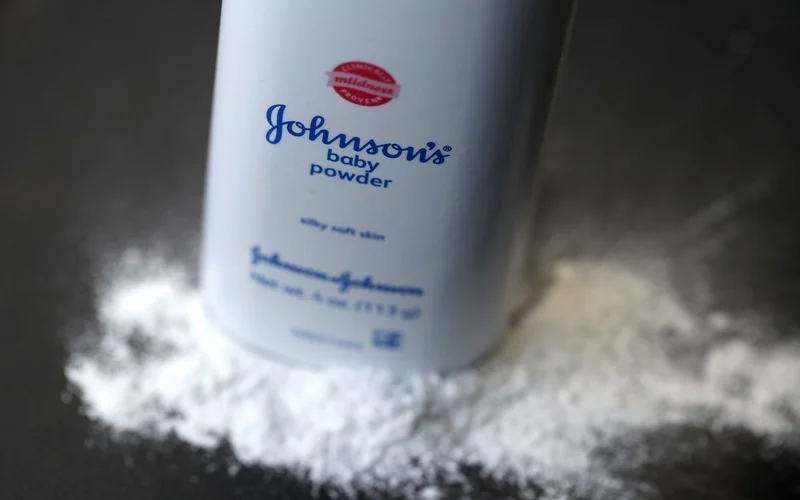
Cornstarch-containing powders typically have a long shelf life due to their stable, dry composition, but they are not immune to degradation over time.
While cornstarch itself doesn’t “expire” in the traditional sense, several factors can impact the quality and effectiveness of the powder.
Typical Shelf Life
Most cornstarch-based powders remain effective for 1 to 3 years if stored properly. Some manufacturers may include a “best by” or “use by” date on the packaging as a guideline.
Factors Affecting Shelf Life
Moisture Exposure:
Cornstarch is highly absorbent, so exposure to humidity can cause clumping and make the powder less effective. Moist conditions may also encourage mold or bacterial growth.
Additives:
Powders with added fragrances, essential oils, or soothing ingredients like aloe vera may degrade over time, resulting in an unpleasant odor or reduced performance.
Storage Conditions:
Heat and sunlight can accelerate the breakdown of ingredients and compromise the powder’s consistency and scent.
Signs the Powder May No Longer Be Usable
- Clumping: Indicates moisture exposure.
- Unpleasant Odor: Suggests the breakdown of additives or contamination.
- Discoloration: This may point to spoilage or contamination.
Shelf Life of Talc-Based Powders
Talc-based powders are known for their long shelf life due to the stability of talc, a naturally occurring mineral.
While talc itself doesn’t degrade over time, the overall shelf life of talc-based powders can be influenced by added ingredients, packaging, and storage conditions.
Typical Shelf Life
Talc-based powders generally last 3 to 5 years or longer if stored in optimal conditions. Many manufacturers include a “best by” or “use by” date as a guideline, but the product may still be usable after that if it shows no signs of deterioration.
Factors Affecting Shelf Life
Additives:
Fragrances, essential oils, or other compounds mixed with talc can degrade, leading to changes in smell, texture, or effectiveness.
Moisture Exposure:
Talc is hydrophobic, meaning it repels water, but prolonged exposure to moisture can still cause clumping or contamination.
Packaging:
Containers that are not tightly sealed may allow air, dust, or moisture to enter, compromising the product over time.
Signs the Powder May No Longer Be Usable
- Clumping: Indicates moisture exposure.
- Unusual Odor: Suggests the breakdown of additives like fragrances.
- Discoloration: This may indicate contamination or chemical changes.
Safety Considerations
Due to concerns about talc and its potential links to respiratory issues and health risks, many manufacturers have shifted to cornstarch-based powders.
If you’re using an older talc-based powder, ensure it’s stored well and consider transitioning to safer, modern alternatives if health concerns arise.
Properly stored talc-based powders can remain effective for many years, but it’s always best to check for any signs of deterioration before use.
The Basics of Baby Powder
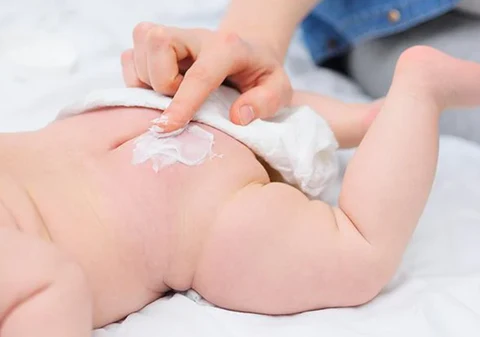
Baby powder is a versatile personal care product designed to keep skin dry, smooth, and free from irritation. It has been a household staple for decades, valued for its simplicity and effectiveness. Here’s an overview of its essentials:
What Is Baby Powder?
Baby powder is a finely milled, powdery substance applied to the skin to absorb moisture, reduce friction, and prevent irritation.
It is commonly used on babies to protect their delicate skin from diaper rash and chafing but is also popular among adults for similar purposes.
Key Ingredients
Made from talc, a naturally occurring mineral, it has a smooth, silky texture and excellent moisture-absorbing properties.
Note: Health concerns have led many brands to phase out talc in favor of safer alternatives.
Additional Ingredients
Some formulations include soothing agents like aloe vera, chamomile, or mild fragrances to enhance comfort and provide a pleasant scent.
Uses of Baby Powder
For Babies: Prevents diaper rash by absorbing moisture and reducing irritation.
Household Uses: Some people use baby powder to deodorize shoes or freshen fabrics.
How Does It Work?
Baby powder forms a thin layer on the skin that:
Absorbs Moisture: Keeps the skin dry by drawing away excess sweat or moisture.
Reduces Friction: Minimizes irritation caused by skin rubbing against itself or clothing.
Soothes Skin: Many formulations help calm and protect sensitive areas.
Safety Considerations
Use sparingly and avoid creating dust clouds to prevent inhalation, especially around babies.
Opt for cornstarch-based powders for a safer alternative to talc-based options.
Always follow the product’s instructions and check for skin sensitivity or allergic reactions.
Best Ways To Store Your Baby Powder
Proper storage of baby powder is essential to maintain its quality, effectiveness, and safety. Whether you’re using talc-based or cornstarch-based powder, following these tips will help keep your product in optimal condition for longer.
Keep It Cool and Dry
Store baby powder in a location free from excessive heat and humidity, such as a bathroom cabinet or a dry shelf.
Avoid placing it near sinks, showers, or other areas prone to moisture, as humidity can cause clumping and contamination.
Seal the Container Tightly
Ensure the lid or cap is securely closed after each use to prevent air, dust, and moisture from entering the container.
If the container is damaged, consider transferring the powder to a clean, airtight container.
Avoid Direct Sunlight
Prolonged exposure to sunlight and heat can degrade certain additives, like fragrances or essential oils, and compromise the powder’s texture and scent.
Store it in a shaded or enclosed area to preserve its quality.
Maintain Cleanliness
Use clean, dry hands or a powder applicator to prevent introducing bacteria or moisture into the container.
Keep the packaging free from residue or spills, especially around the lid.
Store Away From Children’s Reach
Keep baby powder out of reach of children to avoid accidental spills or inhalation, which can pose health risks.
How Is Baby Powder Used On Babies?
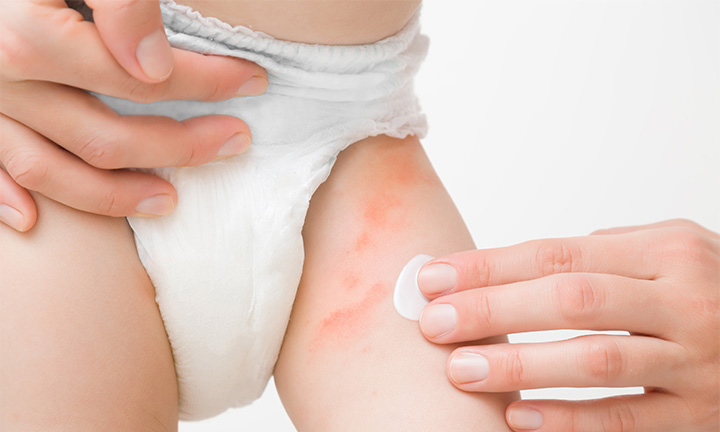
Baby powder is commonly used on babies to keep their skin dry, reduce irritation, and prevent rashes, especially in areas prone to moisture like the diaper area.
Proper application is essential to ensure safety and effectiveness. Here’s how to use baby powder on babies:
Steps for Using Baby Powder on Babies
Choose the Right Powder:
Opt for a cornstarch-based baby powder, as it is considered safer than talc-based options.
Ensure the product is free of harsh chemicals, strong fragrances, or additives that may irritate a baby’s delicate skin.
Clean and Dry the Skin:
Before applying baby powder, gently clean the baby’s skin with a soft cloth or baby wipes.
Pat the skin completely dry with a clean towel to prevent trapping moisture under the powder, which can worsen irritation.
Apply Sparingly:
Shake a small amount of powder into your hand or onto a cloth—never directly onto the baby—to avoid creating a dust cloud.
Gently pat the powder onto the baby’s skin, focusing on areas prone to moisture or friction, such as the diaper area, skin folds, or underarms.
Avoid excessive amounts, as too much powder can clump and irritate the skin.
Avoid Sensitive Areas:
Keep powder away from the baby’s face, especially the nose and mouth, to prevent accidental inhalation, which can cause respiratory issues.
Do not apply to broken, irritated, or inflamed skin.
Secure the Diaper:
After applying the powder, secure the diaper snugly but not too tightly, allowing airflow to keep the baby’s skin dry and comfortable.
Safety Tips for Using Baby Powder on Babies
Minimize Inhalation Risks: Apply in a well-ventilated area and avoid shaking the powder near the baby’s face.
Use Only When Necessary: Baby powder is most useful for moisture-prone areas; it’s not needed for every diaper change if the skin is dry and healthy.
Watch for Reactions: Stop use if you notice redness, irritation, or signs of an allergic reaction.
Is it safe to use baby powder?
The safety of baby powder depends on the type of powder, how it is used, and the precautions taken during application.
While baby powder has been a trusted product for generations, recent health concerns have prompted closer scrutiny. Here’s an overview of its safety considerations:
Does Baby Powder Expire
Cornstarch-based baby powders are generally considered safe for use. Cornstarch is a natural, plant-based ingredient that absorbs moisture effectively and is less likely to cause health concerns.
Pros:
Safe for most babies and adults.
Free from asbestos-related risks associated with talc.
Widely recommended as a safer alternative to talc-based powders.
Cons:
In rare cases, cornstarch particles can still be inhaled, potentially causing respiratory irritation.
Talc-Based Baby Powder
Talc-based baby powders have raised safety concerns due to the potential presence of asbestos, a known carcinogen, in natural talc deposits.
Many studies have linked talc use to respiratory issues and, in some cases, an increased risk of ovarian cancer when used in the genital area.
Cons:
Talc inhalation can cause respiratory problems, especially in infants.
Long-term use has been associated with potential health risks.
Many manufacturers have stopped producing talc-based powders due to these concerns.
How to Make Baby Powder Last Longer
To make your baby powder last longer and maintain its quality, proper storage and usage are key. By following these simple tips, you can extend its shelf life and maximize its value:
Store Properly
Keep it Dry: Store the powder in a cool, dry place away from humidity to prevent clumping and contamination.
Avoid Heat and Sunlight: Excessive heat or direct sunlight can degrade fragrances or additives, reducing the powder’s effectiveness.
Seal the Lid Tightly: Always close the container securely after use to protect it from air, moisture, and dust.
Use Sparingly
Apply in Small Amounts: Use only as much as needed to achieve the desired effect. A little goes a long way, especially for absorbing moisture or reducing friction.
Keep It Clean
Avoid Cross-Contamination: Use clean, dry hands or an applicator to handle the powder. This prevents introducing bacteria or moisture into the container.
Protect the Packaging: Wipe the container regularly to keep it free from residue, ensuring a tight seal and clean usage.
Use Alternatives When Possible
Air Dry the Skin: Whenever possible, let the baby’s or your skin air dry instead of relying solely on powder.
Consider Moisture-Wicking Products: In humid climates, lightweight, moisture-wicking fabrics can complement the use of baby powder and reduce overuse.
Other Bases Of Baby Powder Include
In addition to the common talc and cornstarch bases, baby powder can also be made from various other ingredients to meet different preferences or needs. Here are some other bases used in baby powders:
Arrowroot Powder
What It Is: A fine, starch-based powder derived from the roots of the arrowroot plant.
Benefits: Arrowroot powder is often used as a natural alternative to cornstarch and talc. It is known for its ability to absorb moisture and soothe irritated skin, making it a gentle option for babies and those with sensitive skin.
Common Use: Often found in homemade or natural baby powders, it’s a popular choice for those seeking organic or all-natural ingredients.
Baking Soda
What It Is: A chemical compound (sodium bicarbonate) commonly used in baking and as a deodorizer.
Common Use: Frequently used in homemade or natural baby powder recipes, it is mixed with other powders to create a multi-purpose formula for moisture absorption and odor control.
Kaolin Clay
What It Is: A soft, fine, white clay that comes from naturally occurring minerals.
Benefits: Kaolin clay is known for its absorbent properties and gentle nature, making it safe for sensitive skin. It also has soothing and anti-inflammatory benefits, which can help calm irritated skin.
Common Use: Found in some baby powder formulations, especially those marketed as sensitive skin-friendly or natural.
Rice Starch
What It Is: A powder derived from rice.
Benefits: Rice starch is a mild, absorbent powder that is gentle on the skin and works similarly to cornstarch. It is often used in baby powders for its moisture-absorbing properties without irritating the skin.
Silica (Silica Gel)
What It Is: Silica is a naturally occurring mineral that is commonly used as a drying agent.
Common Use: Used in some adult body powders or baby powders designed for extreme moisture control.
Tapioca Starch
What It Is: A powder derived from the cassava root, similar to cornstarch.
Benefits: Tapioca starch is absorbent, hypoallergenic, and smooth in texture, making it a suitable alternative to talc and cornstarch.
Common Use: Often used in natural or homemade baby powders due to its gentle, moisture-absorbing properties.
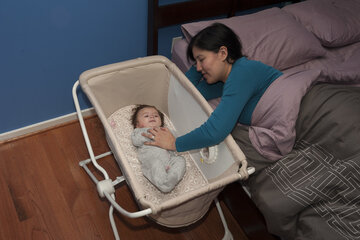
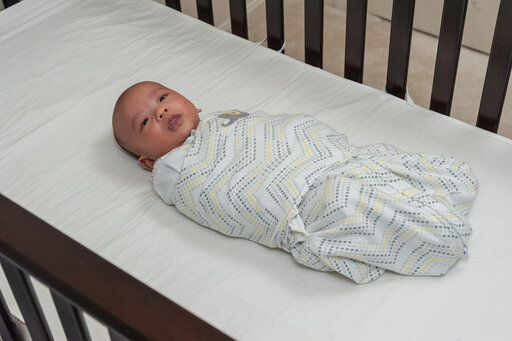
Leave a Comment